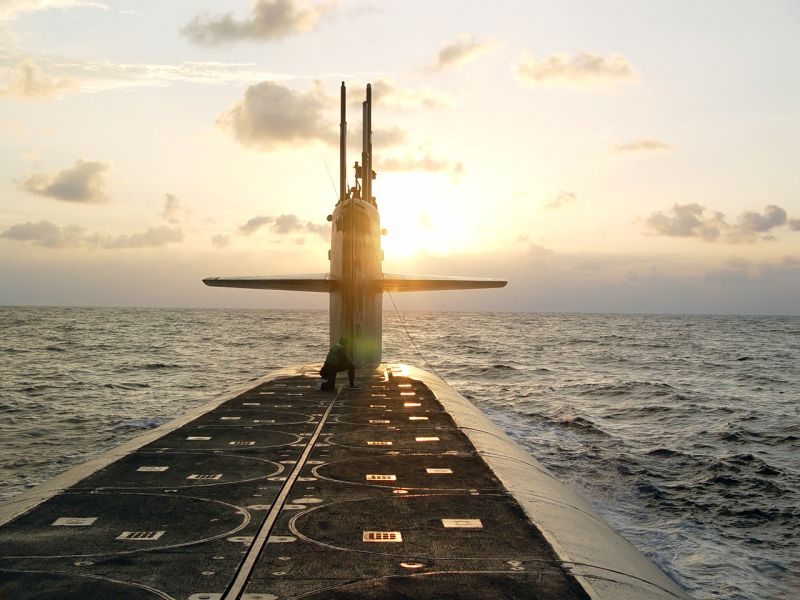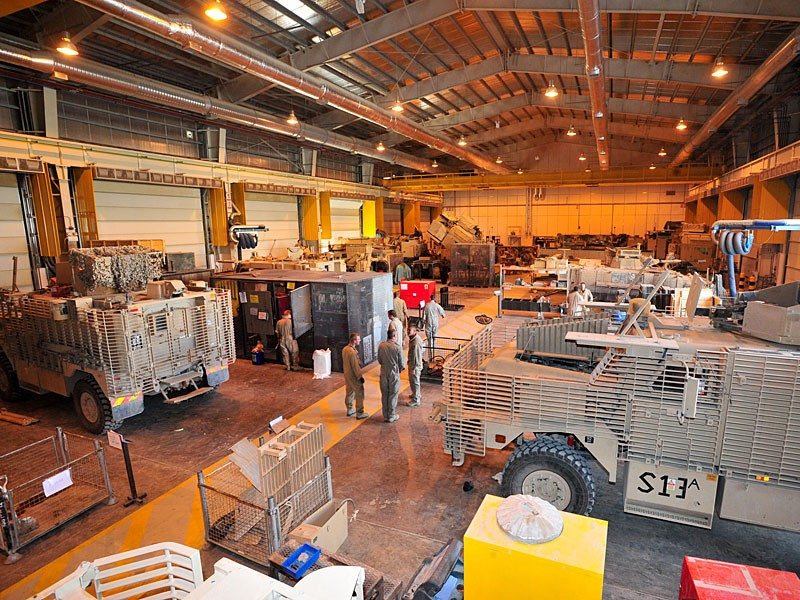Fifty-four years ago this week, USS George Washington (SSBN-598) made history when it successfully launched two Polaris A1 missiles off Cape Canaveral, bringing to fruition a remarkable research and development effort composed of Navy and industry partners that had begun only four years earlier. Later that year, on November 15, USS George Washington began the nation’s first strategic deterrent patrol, carrying 16 missiles that had a range of 1,200 nautical miles.
Even though the Cold War is over and often forgotten, strategic deterrence remains a cornerstone of national security policy in the 21st century. The United States’ ability to maintain a strong, credible nuclear deterrent is a key element of the United States national security and the security of its allies and partners. Next year, we will commemorate 60 years of the fleet ballistic missile (FBM) program.
Since its inception in 1955, the FBM program’s mission has been carried out by six generations of Submarine Launched Ballistic Missiles (SLBM) and four classes of nuclear-powered ballistic missile submarines (SSBN). As part of a long-standing triad, the FBM program has provided the most survivable, second-strike capability.
The current workhorse of the United States SSBN fleet is the OHIO Class submarine. Beginning in 1981, the first eight OHIO Class submarines were outfitted with the Trident I C4 missile. The second ten were outfitted with the Trident II D5 starting in 1988. In 2006 and in the following years, the four oldest OHIOs were converted to guided missile submarines and the next four oldest were back-fitted to accommodate the Trident II D5.
The OHIO Class submarine has played its role in ensuring the United States maintains its place in the global-commons by showing its strong commitment and maintaining a capable and effective, safe, and secure nuclear deterrent. However, it is an aging asset. Originally designed with a 30-year service life, they are now able to remain in the fleet for 42 years.
Due to safety concerns and hull-integrity, extending them any further isn’t an option. Earlier this month, while on a visit to Naval Submarine Base Kings Bay, Georgia, Secretary of Defense Chuck Hagel was resolute in his commitment for prioritizing a replacement. “I’ve been clear on this, the president has been clear, all our senior leaders have been clear – we need a new generation of … submarines,” he said. “We’re going to prioritize that.”
As the current SSBN fleet begins retiring in 2027, it will be replaced by the OHIO Replacement submarine. The current fleet of 14 OHIO Class submarines with 24 missile tubes will be replaced by 12 OHIO Replacement submarines with 16 missile tubes. This reduced fleet size and payload capability are tailored to meet the United States Strategic Command’s mission requirements throughout the new ship’s 42 year service life. A life-of-ship reactor core eliminates the need for mid-life refueling and the need for 14 ships.
The OHIO Replacement SSBN procurement is a significant national investment. The program’s guiding philosophy since inception is “credible deterrence at the lowest possible cost.” The Navy is aggressively working to reduce cost without compromising capability. OHIO replacement’s design re-uses and re-hosts current submarine technologies and systems from the VIRGINIA and OHIO Classes to the maximum extent feasible to minimize program risk and cost. Investment in new technology is limited to the areas of the ship that require improved capability to maintain credible survivability and thus credible deterrence.
The Strategic Weapon System (SWS) is the essential building block in delivering a sea-based strategic deterrence capability. Therefore it is important that we maintain and modernize this system throughout both the OHIO and OHIO Replacement ship’s life.
SSBN598_Construct_03For the SWS, the Navy is working to ensure both the shipboard systems and the flight hardware will be ready to deploy aboard OHIO Replacement. To do this, the Navy has developed a shipboard integration program. By 2020, each of the shipboard sub-systems on the current OHIO Class submarines, such as fire control, navigation, and the launcher, will be refreshed. This shipboard system configuration will serve as the initial configuration for OHIO Replacement.
Concurrent with the shipboard integration program, the Trident II D5 Life Extension (D5 LE) program will ensure the missile systems maintain their effectiveness. The Trident II D5 – and its five predecessors are more than just a missile. It is a complex system composed of solid rocket motors, numerous electronic packages, a guidance system, and reentry bodies. As the overall system ages, each of these subsystems presents their own unique challenges in regards to life extension and modernization. However, the Trident II D5 is a proven system. To date there have been 150 successful test flights. Rather than develop a new missile system, it was proven to be more cost-effective to replace components that were reaching or had reached obsolescence. The D5 LE will provide the additional missile assets needed to extend the service life of the weapon system.
One key benefit of the D5 LE is that the Navy can avoid developing an upgraded or new weapon system at the same time we are building a new class of submarine. That will reduce the cost and design risk of the OHIO Replacement, but this also means that the Trident II D5 will last more than twice as long as any previous missile system – more than 50 years (Trident I C4 was in service for 24 years).
For the first time, the Navy is building the missile compartment in a series of four-tube quad packs that will be used not only on the OHIO Replacement, but also aboard the United Kingdom’s SUCCESSOR SSBN through the 1963 Polaris Sales Agreement. SUCCESSOR is scheduled to achieve initial operating capability before OHIO Replacement. This will be the first time that the United Kingdom is purchasing a deterrent system that has not already been deployed or tested by the United States.
To mitigate risk to its ally, the United States Navy will test and proof the system at the Launch Test Facility in China Lake, California and through SWS Ashore in Cape Canaveral, Florida. SWS Ashore will validate designs, interfaces, performance, and procedures before SSBNs are built in the United Kingdom or the United States, rather than doing this after the system is built as was done in the past. This will allow the Navy to detect and correct any problems in procedures early, helping both SUCCESSOR and OHIO Replacement enter the fleet faster, more effectively, and more efficiently.
Lead Ship authorization of the OHIO Replacement first ship begins in fiscal year 2021, a two year shift from the Milestone A driven by the 2011 Budget Control Act. No further delay can be accommodated without disruption to the current United States Strategic Command strategic deterrent requirement. The OHIO Replacement program and D5 LE remain on track to conduct the first strategic deterrence patrol in 2031.
The OHIO Replacement and its Strategic Weapon System will be a national asset whose endurance and stealth will enable the Navy to provide continuous, uninterrupted and credible strategic deterrence into the 2080’s. It is a national imperative to continue investment in our triad of nuclear forces for it to remain viable and credible. As long as there are countries around the globe that possess nuclear weapons or countries that are trying to develop these weapons, no mission will be more important than maintaining nuclear deterrence to safeguard our nation.
By VADM Terry Benedict, Director Strategic Systems Programs and RADM Dave Johnson, Program Executive Officer, Submarines











